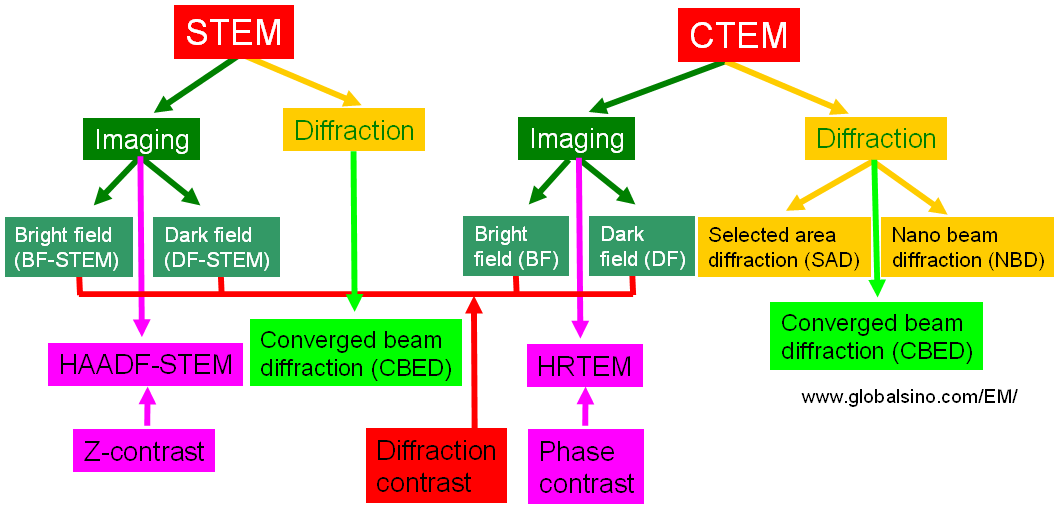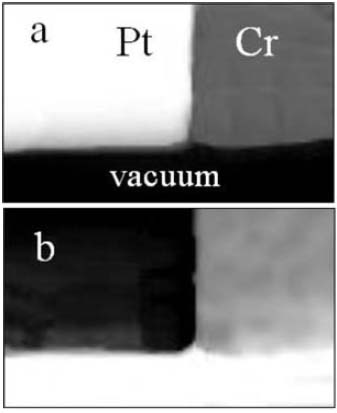=================================================================================
Both bright-field imaging in TEM and STEM are performed with transmitted beams. However, images in TEM are formed with a parallel beam passing through a specimen, while images in STEM are formed with a convergent beam through a specimen.
Figure 2882a illustrates the comparison of the main contrasts in both CTEM and STEM modes. In general, the signal-to-noise ratio of BF-STEM image is not as good as that in HRTEM and BF-TEM. However, BF-STEM images is still valuable as they can be obtained simultaneously with DF-STEM images, allowing one-to-one correspondence of the different images from the same specimens.

Figure 2882a. Comparison of the main contrasts in both CTEM and STEM modes.
The formation of bright-field and dark-field TEM/STEM images normally obeys the principle of the monotonic increase of cross sections σ(Z) for thermal diffuse, elastic, and inelastic scatterings. Therefore, if there is no diffraction effects, darker (lighter) contrasts in bright-field (dark-field) images, respectively, are associated with heavier elements, for instance, as shown in Figure 2882b for a Pt/Cr interface with ZCr = 24 and ZPt=78.

Figure 2882b. Contrasts of Pt/Cr interface in dark-field (a) and bright-field (b) TEM/STEM images. Adapted from [1]
Theoretically, due to the large d (the diameter of the specimen over which the illumination is coherent, see page1708), parallel-beam TEM with α ≈ 0 mrad can be used to record lattice fringes with diffraction contrast (so-called HRTEM). However, the lattice fringes in BF-STEM mode are not as good as that in TEM mode.
[1] Konstantin Iakoubovskii, Kazutaka Mitsuishi,Yoshiko Nakayama, and Kazuo Furuya, Mean free path of inelastic electron scattering in elemental solids and oxides using transmission electron microscopy: Atomic number dependent oscillatory behavior, Physical Review B 77, 104102 (2008).
|